In photography, aperture refers to the opening in a lens that allows light to pass through and reach the camera’s sensor or film. A wider aperture lets in more light, while a smaller one restricts the amount of light. Aperture values are represented by f-numbers, like f/1.8 and f/2.8, which are two of the most common aperture settings found in camera lenses.
The key difference between f/1.8 and f/2.8 lies in their ability to gather light and create a shallow depth of field (background blur). An f/1.8 aperture allows twice as much light to hit the sensor compared to f/2.8, making it ideal for low-light situations and achieving a stronger background blur effect.
Below, you’ll find an in-depth comparison of the two across various real-life photography scenarios, so that you can understand which one is the right choice for you.
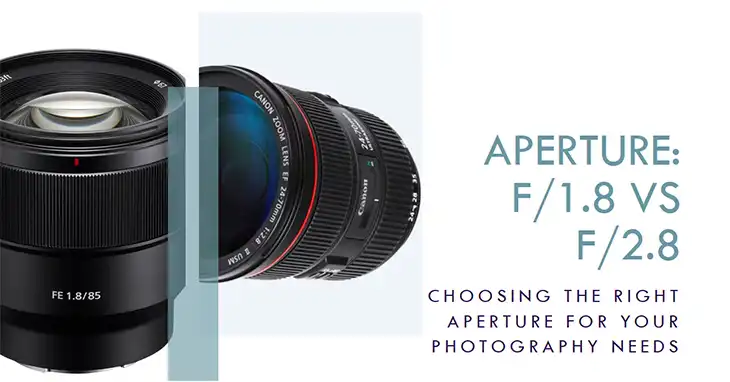
Light Gathering and Low Light Performance
Every full f-stop decrease in aperture value (e.g., from f/2.8 to f/1.8) doubles the amount of light reaching the sensor. This one-stop difference might not seem significant, but it can be crucial in low-light conditions.
With an f/1.8 lens, you can use faster shutter speeds to freeze motion and reduce camera shake, or lower your ISO to minimize noise in your images. For example, in a dimly lit indoor setting, an f/1.8 lens could allow you to shoot at 1/60th of a second at ISO 1600, while an f/2.8 lens might require a slower 1/30th of a second shutter speed or a higher ISO of 3200 to achieve the same exposure.
Scenarios where f/1.8 truly shines include:
- Indoor portraits: Capture beautiful, well-lit portraits without the need for harsh flash or excessive post-processing.
- Nighttime cityscapes: Shoot handheld in low light conditions, capturing the vibrant colors and atmosphere of city lights.
- Astrophotography: Wider apertures like f/1.8 are essential for capturing detailed shots of the night sky and stars.
Depth of Field (Background Blur)
Depth of field refers to the area of acceptable sharpness in an image, extending from the focused subject to the background. A wider aperture like f/1.8 creates a shallower depth of field, resulting in a stronger background blur (also known as bokeh) that separates the subject from the background.
This effect is particularly desirable for portrait photography, as it draws the viewer’s attention to the subject’s face and creates a pleasing, out-of-focus background blur. In contrast, an f/2.8 aperture produces a slightly deeper depth of field, with less background separation.
Here’s a visual comparison of the background blur achieved by f/1.8 and f/2.8 lenses:
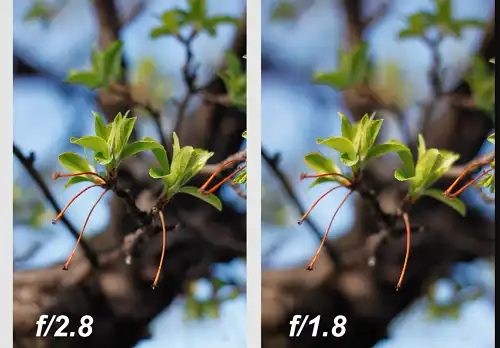
As you can see, the f/1.8 image exhibits smoother, creamier bokeh, while the f/2.8 image has a slightly busier background, with more distracting elements in focus.
Other Considerations
Price
Generally, f/1.8 prime lenses tend to be more affordable than their f/2.8 zoom counterparts. For example, the Canon EF 50mm f/1.8 STM lens retails for around $125, while the Canon EF 24-70mm f/2.8L USM zoom lens costs around $1,600.
Size and weight
Prime lenses like the f/1.8 options are typically lighter and more compact than f/2.8 zoom lenses, making them ideal for travel or street photography where portability is key. The Nikon AF-S 50mm f/1.8G weighs just 185g, while the Nikon 24-70mm f/2.8G ED weighs a hefty 900g.
Image quality
While both f/1.8 and f/2.8 lenses can produce sharp images, some photographers report slightly better sharpness and contrast when stopping down an f/1.8 lens to f/2.8 or smaller apertures. However, for most users, this difference is negligible.
Learning curve
Prime lenses like f/1.8 options force you to “zoom with your feet” due to their fixed focal length. While this can be challenging initially, it can also help you develop better composition skills and a deeper understanding of framing and perspective.
Here’s a quick comparison table summarizing the key differences:
| Aspect | f/1.8 Prime Lens | f/2.8 Zoom Lens |
| Light Gathering | Twice as much light | Less light |
| Depth of Field | Extremely shallow | Moderately shallow |
| Bokeh Quality | Smooth, creamy | Slightly busier |
| Cost | $100 – $300 | $500 – $2000+ |
| Size/Weight | Compact, lightweight | Larger, heavier |
| Versatility | Fixed focal length | Zoom capability |
Choosing Between f/1.8 and f/2.8
If your priority is low-light performance and achieving a strong, creamy background blur for portraits or artistic shots, an f/1.8 prime lens is an excellent choice. These lenses excel in situations where you need to shoot handheld or want to isolate your subject from the background.
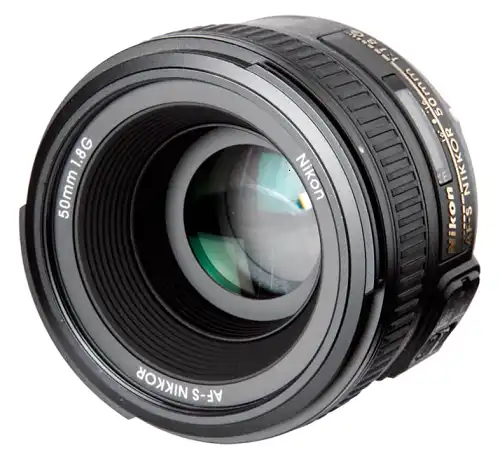
For example, the affordable Nikon 50mm f/1.8G ($216) is a great option for photographing indoor events, capturing nighttime street scenes, or taking beautiful portraits with gorgeous bokeh.
However, if you need more versatility for various shooting scenarios like travel, events, or landscapes, a zoom lens with an f/2.8 aperture might be a better option. These lenses sacrifice some low-light capability and background separation for the convenience of a variable focal length.
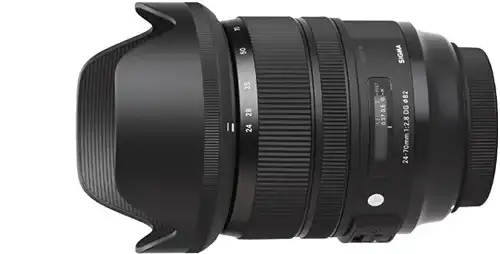
The Sigma 24-70mm f/2.8 DG OS HSM ($799) is a popular choice for its versatile zoom range, constant f/2.8 aperture throughout the range, and optical image stabilization to counter camera shake.
Budget is also a significant consideration. Entry-level photographers or those on a tight budget might find the affordability of f/1.8 prime lenses appealing, as they offer excellent value for money.
It’s also important to consider your camera’s sensor size. On a crop sensor (APS-C) camera, the depth of field provided by an f/1.8 lens is similar to an f/2.8 lens on a full-frame camera. This means that an f/1.8 lens on a crop sensor might not provide as shallow a depth of field as you’d expect.
Advanced Considerations
Image stabilization
Many modern lenses, particularly zoom lenses, feature built-in image stabilization technology. This can be extremely helpful when shooting at slower shutter speeds, as is often required with narrower apertures like f/2.8, especially on crop sensor cameras.
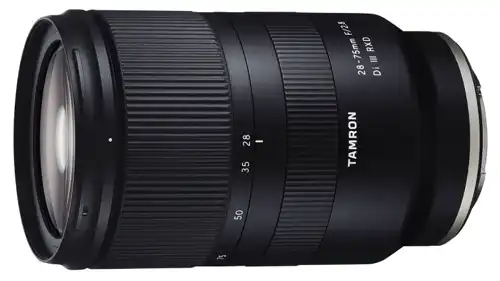
For example, the Tamron 28-75mm f/2.8 Di III RXD lens for Sony E-mount has a rated 5 stops of image stabilization, allowing you to handhold at slower shutter speeds in low light.
Manual vs. autofocus lenses
Many f/1.8 prime lenses are manual focus, requiring you to physically adjust the focus ring to achieve sharp results. While this can be challenging initially, it also provides greater creative control over your focus point. Autofocus lenses, more common in f/2.8 zoom options, offer convenience but may struggle in low-light conditions.
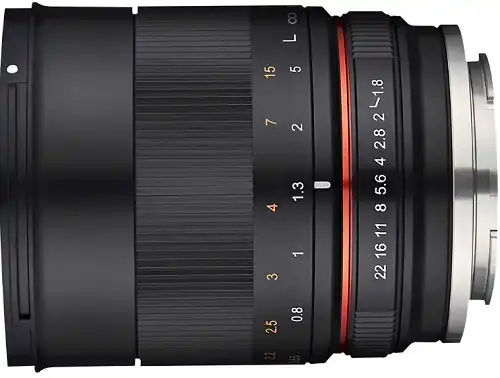
The Samyang/Rokinon 85mm f/1.8 is a popular manual focus portrait lens known for its dreamy bokeh and affordable price ($279).
Final Words
There’s no universal “better” aperture – the ideal choice depends on your photographic needs, gear, and budget. F/1.8 excels for low-light flexibility and beautifully shallow depth of field, while f/2.8 zooms offer unmatched versatility with a slight compromise in light gathering and bokeh.
Prioritize low-light events, dramatic portraiture, and extreme background separation? An affordable f/1.8 prime is a smart investment. Need a walkabout lens for everything from landscapes to family events? A stabilized f/2.8 zoom is tough to beat.
FAQs
Is f/1.8 always better?
No, the ideal aperture depends on your needs and compromises. F/2.8 zooms offer versatility that primes can’t match.
Can editing simulate bokeh?
Software-generated bokeh often looks artificial. Optically created shallow depth of field appears much more natural.
What about f/1.4 and f/1.2 lenses?
These ultra-wide apertures gather even more light and provide more shallow depth of field, but are larger, heavier, and far more expensive.
